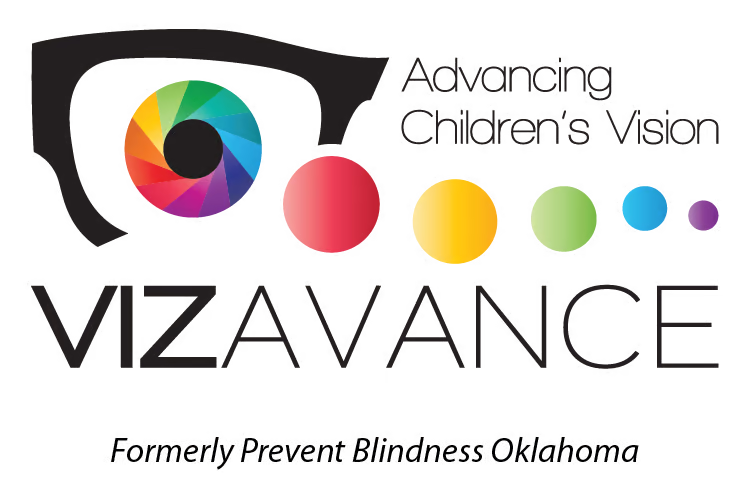AMD is a leading cause of new cases of vision loss among older adults. The degeneration affects the macula, the central area of the back of the eye that is responsible for reading vision. As a result, the ability to see fine details is impaired. Treatment can be effective for some types of macular degeneration, but early detection in the course of the disease is vital.
TERMINOLOGY
AMBLYOPIA (Lazy Eye)
Seeing well with one eye, but poorly with the other. The eyes may appear healthy, straight, and normal. The two eyes must learn to work together, one eye must learn to work alone, or one eye takes over and does the work while the other eye becomes functionally blind. Visual impairment from Amblyopia can be prevented if recognized and treated early. When the vision in one of the eyes is reduced because the eye and the brain are not working together properly. The eye itself looks normal, but it is not being used normally because the brain is favoring the other eye. By age 9 is usually too late to correct it.
ANISOCORIA
This condition is an asymmetry of pupil diameter where the pupil of one eye differs in size from the pupil in the other eye. Your pupil is the black circle in the center of your eye; they are usually the same size.
ANISOMETROPIA
This condition can adversely affect the development of binocular vision in infants and children. The brain will often suppress the vision of the blurrier eye in a condition called Amblyopia or “Lazy Eye.
ASTIGMATISM
Blurred vision that is usually the result of irregularities in the shape of the cornea (the transparent window of the eye). In astigmatism, some orientations of lines (for example, vertical or horizontal) are seen more clearly than others. The cornea has an abnormal curve causing out-of-focus vision. It is a condition in which the eye does not focus light evenly onto the retina, the light-sensitive tissue at the back of the eye.
CATARACT
Clouding of the lens in the eye. It is estimated that 95 percent of those over 65 years of age have some degree of cataract which may or may not cause blurring of vision. If a cataract causes vision loss that interferes with important activities, the cataract can be surgically removed, resulting in an improvement of the vision in majority of cases.
COLOR DEFICIENCY
An inability, most often inherited, to distinguish among certain colors–usually red and green, but sometimes blue and yellow. Usually not correctable, but does not affect overall vision.
DIABETIC RETINOPATHY
A major cause of vision impairment and blindness. It is a disorder in which small blood vessels nourishing the retina (back layer of the eye) weaken and break down or become blocked.
GLAUCOMA
The “sneak thief” of sight, produces a painless increase of the pressure inside the eye which “silently” destroys the optic nerve–eventually resulting in loss of vision and blindness. Through early intervention and strict adherence to medical treatment, most cases can be controlled and the risk of additional visual loss and blindness reduced. High risk individuals include those with a family history of Glaucoma, the elderly, very dark eyed individuals, diabetics, those who had a significant eye injury in the past, and those on long-term steroids.
HYPEROPIA (Farsightedness)
In this condition, the eyeball is too short for the normal focusing power of the eye. In children, the lens in the eye accommodates for this error and provides clear vision for distant, and usually near, viewing, but with considerable effort that often causes fatigue and sometime crossed eyes (Strabismus). Where distant objects may be seen more clearly than objects that are near, but can be corrected with glasses.
MYOPIA (Nearsightedness)
In Myopia, the eyeball is typically too long for the eye’s optics. It is a common type of refractive error where close objects are clear and distant objects appear blurred.
OPHTHALMOLOGIST (M.D.)
A doctor of medicine with a 4-degree plus 4 years of medical school and additional years of medical school specializing in the diagnosis and medical or surgical treatment of eye disease. Prescribes eyeglasses, contact lenses, performs surgery, and prescribes therapies.
OPTOMETRIST (O.D.)
A doctor of optometry with a 4-year degree plus 4 years of optometric training. Doctors of Optometry are qualified to examine eyes, prescribe glasses, fit contact lenses, diagnose, and treat ocular disease, and prescribe therapies. When more extensive medical treatment and/or surgery is needed they will refer the patient to a specialist.
PEDIATRIC OPTOMETRIST/ OPHTHALMOLOGIST
A doctor of optometry with a 4-year degree plus 4 years of optometric training. Doctors of Optometry are qualified to examine eyes, prescribe glasses, fit contact lenses, diagnose, and treat ocular disease, and prescribe therapies. When more extensive medical treatment and/or surgery is needed they will refer the patient to a specialist.
STRABISMUS (Squinted, Crossed Eyes)
A misalignment of the eyes that makes it difficult, and in many cases impossible, to fixate both eyes on a single object. Eyes are not directed to an object simultaneously. Sometimes the eyes deviate outward and sometimes inward.
Understanding the terminology on the forms that are sent home with your child is very important. Please use this guide to find these explanations. If you have any further questions, please contact us!
OKC Office
50 Penn Place
1900 N.W. Expressway
Suite R110
Oklahoma City, OK 73118
Office: 405-848-7123
Fax: 405-848-6935
info@vizavance.org
Tulsa Office
2506-B E 21st Street
Tulsa, OK 74114
Office: 918-496-3484
Fax: 918-496-0469
info@vizavance.org




